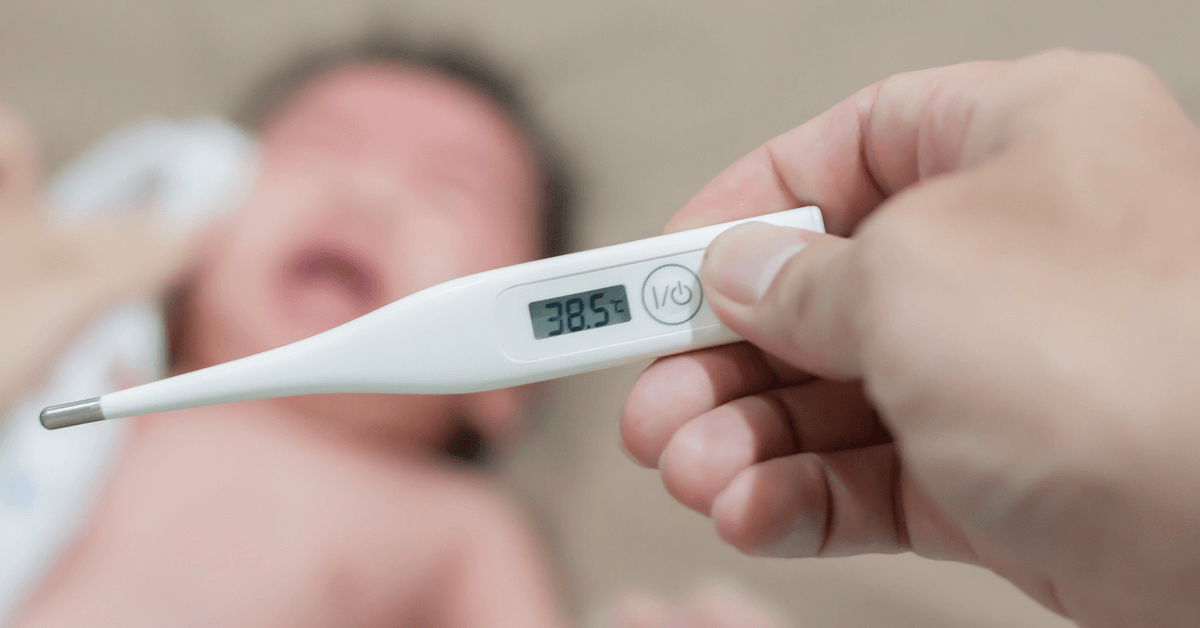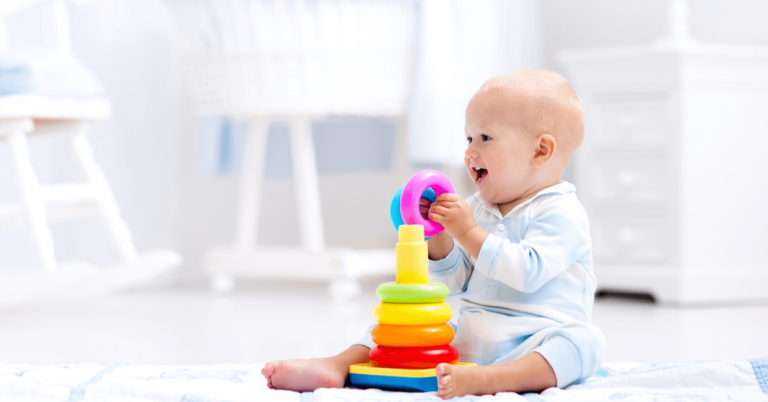Fever in Babies
High fever in babies may be parents’ nightmare. Both the baby’s inability to express himself and the parents’ inexperience can make things even more difficult. The important thing is to deal with it calmly. Because fever in babies may not permanently harm, on the contrary, it is the body’s way of defending itself to kill infections. The critical point here is to determine the cause of the fever. If there is a high fever that continues for a long time, you should consult a doctor. However, you should not be worried if there is a fever at a level that can be intervened at home before it gets too high. For this, you should observe your baby closely.
Why Does a Fever Rise, and How Is It Measured?
Infection (such as upper respiratory tract), viruses, bacteria, meningitis, pneumonia, rheumatic diseases, heatstroke, dressing the baby in layers, and too high ambient temperature cause fever to rise. A body temperature above 38ºC is called fever. But the point to be noted is how the temperature is measured. Body temperature 37.5ºC in the axilla, 38ºC in the ear, 38ºC in the rectum, 37.5ºC in the mouth can be accepted. Since babies are very active, the best way to measure fever in babies in a shorter time will be instruments measuring from the ear or the forehead, which has been widely used recently.
Temperature Measurement Methods in Babies
One of the tools you must have in your medicine cabinet at home is the thermometer (degree). It is impossible to understand your child’s body temperature by placing your hand on his forehead. Of course, the thermometer and the measurement method are also critical. So how should the correct measurement be made? By mouth, armpit, rectal or ear? Studies show that children most enjoy measuring by ear, and experts prefer the breach route because they can obtain the most accurate results. Which method you use is up to you. But remember that you should never leave babies and children alone with a thermometer.
Rectal Temperature Measurement in Babies
The surest way. Apply some oil to the tip of the thermometer. Lay the child on his side and bend the knees slightly. Measure body temperature for 30 seconds with a digital thermometer. Keep the child entertained during the measurement. The result you will get will be half a degree higher than in the armpit.
Oral Temperature Measurement in Babies
Suitable for older children. The thermometer should be kept under the tongue or cheek cavities for 2-3 minutes. The values will be half a degree lower than those taken from the anus. Do not measure with a regular thermometer to avoid the risk of breakage, and Digital thermometers are more practical.
Caution: Cold or hot food or drink taken 10 minutes before the measurement may create a misleading effect.
Armpit Temperature Measurement in Babies
Although it is a prevalent method, its reliability rate is low. It is also unsuitable for very active children because the measurement takes at least 3 minutes. The result of the measurement made here is approximately 1 degree lower when compared to the rectal one. If you want to try the method with older children, place the gauge tip in the armpit and have the child clamp the gauge with their arm. Make sure the armpit and thermometer are dry.
Ear Temperature Measurement in Babies
Special ear thermometers are the ideal method for little ones. Moreover, it is a popular measurement format due to its fast results. The key is to find the correct position. You should pull the upper part of the ear up a little so that the thermometer approaches the eardrum. The result is half a degree below the rectal value. If the baby slept on a warm pillow before the measurement, the result might not be correct. In such a case, it is helpful to wait for half an hour.
What to Do When Fever Rises in Babies
First of all, it is necessary to follow the course of the fire. In fever that does not tend to rise too much and is slightly below the limits, it is essential not to treat the medicine immediately. Because with fever, the body fights infections. It is necessary at this point to keep the baby under close follow-up. While the baby is considered during the day, it is needed to wake up with an alarm every few hours and check the temperature at night. Fever is observed differently in each baby. It may rise slowly in some babies, while it may rise suddenly and is too dangerous in others.
Fever in newborn babies is very risky, and therefore, if the fever level is above 38ºC in 0-3 month babies, it is necessary to apply to a health institution.
First, it is necessary to undress the baby whose fever rises above the degrees as mentioned above. It is hazardous to dress the shivering baby in layers, saying that he is cold, his fever may climb even higher. It is enough to remain a thin athlete on it.
Then, you can either take a warm shower or compress with a wet towel, muslin cloth or cheesecloth that you will put on the joints, forehead and groin. The critical point here is that the water is not cold and that substances such as vinegar, lemon and alcohol are not used. Usually, some parents put ice in this water to decrease fever in a shorter time, but this will frighten the baby unnecessarily. The fever will quickly rise again and even more than before.
The ambient temperature should be around 21-22ºC. It will be sufficient to leave the baby with only the diaper or panties if it is warmer weather. You can determine this temperature with a room thermometer.
In infants, fluid loss begins with fever, so fluid consumption should be increased. If the baby is breastfeeding, it should be breastfed frequently. Babies who take other food can also be given water, juice, soup. It is important to breastfeed your baby with very high fever without holding it too long in the lap. Breastfeeding while lying down will also keep the baby fresh.
When Should Babies Be Given Fever Reducer?
Generally, the use of medication is not recommended for fevers below 38.5ºC. Before giving medicine, make sure to apply the substances mentioned above. If the fever is still rising, you can consult your doctor and use medication or go to a health institution and have on-site treatment. In addition, antipyretic drugs should not be used at widespread intervals, and take care to use them at the time intervals recommended by your doctor. Otherwise, drug poisoning may occur.
When to Contact the Doctor?
- If there is still a fever despite taking every precaution and giving antipyretic medication,
- If the temperature is above 38ºC in babies 0-3 months, 38.3ºC in babies 3-6 months, and over 40ºC in babies six months and older,
- If the baby has fainting, irritability, and uncontrollable crying attacks,
- If there are signs of thirst in the body such as neck stiffness, purple spots on the skin, sunken fontanelles, crying as if it hurts when touched, and lack of tears when crying,
- If there is a history of convulsions or having convulsions at the moment, you must take the baby to a doctor’s control.
Fever During Teething in Babies
According to a general opinion, it is said that fever rises in babies when teething. This is not always true. Since the baby is teething, the fever does not rise. If there is an infection, virus or microbe in the body, fever may increase as the immunity is low during these periods. Here again, it is necessary to observe the baby closely. If it doesn’t last more than three days, doesn’t get above 38.5ºC, and the baby doesn’t get cranky because of a fever, there’s nothing to worry about.
Does the Vaccine Cause High Fever?
Like in the teething period, there is no case that the vaccine will cause a fever. Usually, doctors will tell you which vaccines will cause fever during the examination. At such times, the baby’s fever should be checked during the day and especially at night to prevent any possible negativity.
What is a Fever Convulsion? Does Every Remittance Cause Permanent Damage to the Child?
Convulsions are neurological disorders. With the sudden rise of fever, the brain goes into shock and loss of consciousness occurs. Muscle spasms, tremors and respiratory irregularities are observed. It is usually seen in children aged five months to 5 years. If there is a predisposition to convulsions in the family, the baby is more likely to have convulsions. Parents should calmly put the baby in a safe position at this stage.
First of all, the airway should be kept open, provided that the baby is laid on his side or back on a hard surface and tilted his head back.
If the fever is very high, he should peel off, ventilate the environment and be him to the nearest health institution without wasting any time.
You should never shower a convulsive baby.
Unless the cause of the seizure is a severe disease such as meningitis, it will not cause permanent harm to the baby. But in any case, medical attention should be sought.
Is It Necessary to Use Antibiotics for Every Fever Rise?
You should not give antibiotics to the baby on your initiative without knowing the reason for the fever and without the doctor’s control. We cannot say that every high fever has an infection in the body. A doctor should be consulted if fever cannot be prevented despite antipyretic drugs. Your doctor will tell you whether antibiotics are needed due to the examinations by the health institution.
Reducing fever in infants does not mean that the underlying cause of the fever has been cured. The goal is to protect the baby from a more dangerous situation at that moment. There must be a different reason behind the continuous, uncontrollable fever. Therefore, parents should remain calm and make the first emergency response.
Would you like to share your experiences and questions as a comment?
Have a nice and healthy day!







